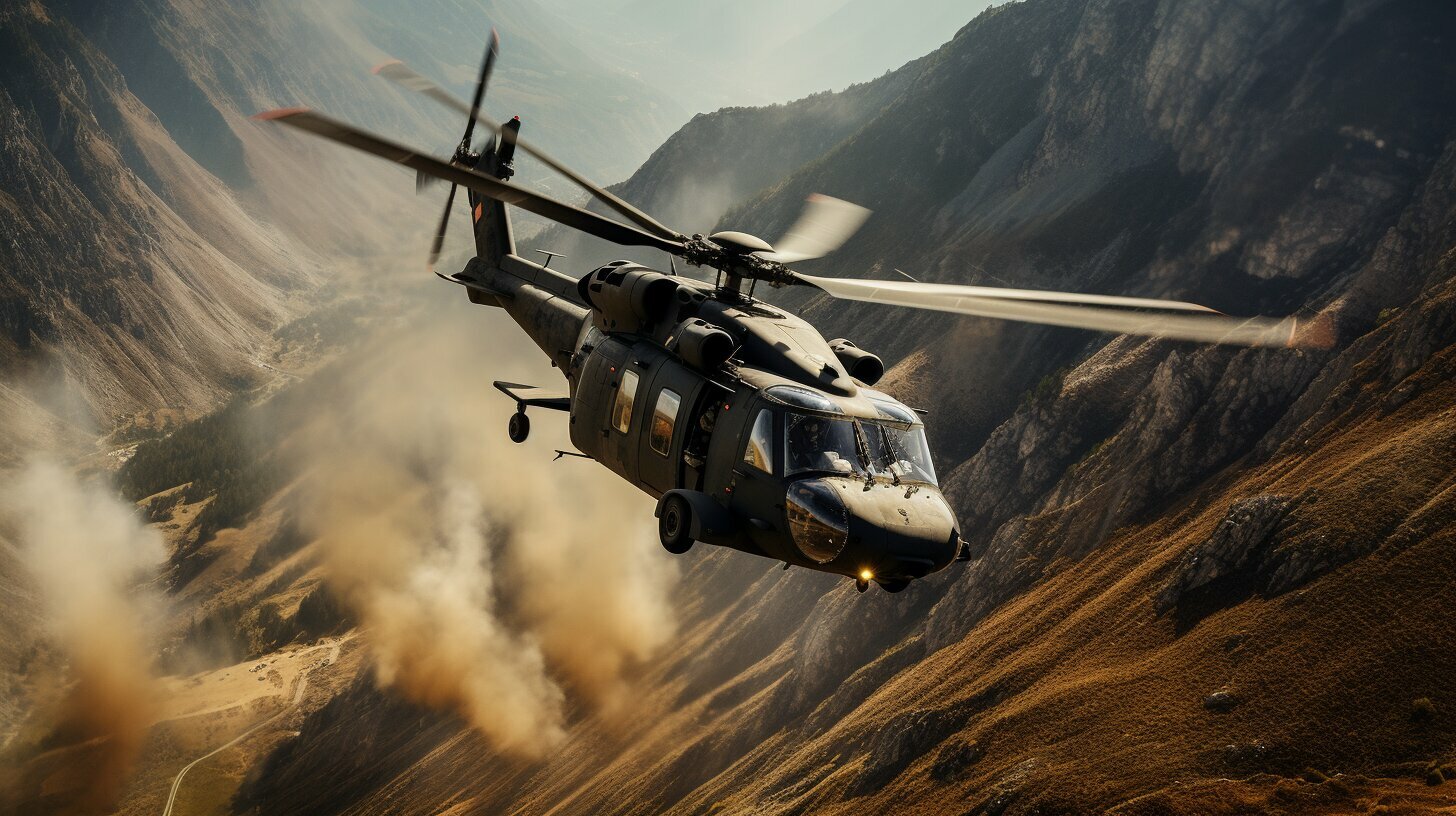
Are Helicopters Dangerous Than Planes, Cars and Trains?
Helicopters are a unique form of aerial transportation that utilize rotating wings to generate lift and thrust. Unlike fixed-wing aircraft like planes, helicopters can take off and land vertically, hover in place, and fly in any direction. This versatility allows helicopters to access locations that planes and other forms of transport cannot.
But with great capability comes greater complexity. Helicopters are inherently more complicated machines than cars, trains and even planes. Their exposed rotating blades make them potentially more hazardous as well. So how does helicopter safety really compare to other modes of transportation?
Helicopter Safety Statistics
When looking at helicopter safety statistics, it’s important to consider both the absolute number of accidents and fatalities, as well as the rate per miles travelled. By sheer numbers, cars are by far the most dangerous form of transport, with over 30,000 fatalities per year in the United States alone. However, this needs to be weighed against the fact that Americans drive trillions of miles per year.
By fatalities per billion miles travelled, helicopters are far riskier than commercial jets or scheduled airlines, but still safer than personal vehicles:
- Helicopters: 1.19 fatalities per billion miles
- Commercial Airlines: 0.07 fatalities per billion miles
- Cars: 7.3 fatalities per billion miles
Helicopters also have a higher accident rate than small private planes. According to research, helicopters have 9.84 accidents per 100,000 flight hours compared to 6.29 for private planes.
Part of this is because helicopters are frequently used for risky operations like emergency medical evacuation, search and rescue, and aerial surveillance over cities or rugged terrain. These high-stress missions make helicopter flying inherently more dangerous than routine passenger service.
Why Are Helicopters More Vulnerable to Accidents?
There are a few key reasons why helicopters are more susceptible to accidents than other forms of transportation:
Complex Mechanical Systems
Helicopters have a lot more moving parts than cars or planes. Their main rotor system alone is a complex assembly of blades, linkages, hydraulic actuators, and gears. Failure of any critical component can lead to loss of control or catastrophic mechanical issues. Engines can also fail due to lack of lubrication, fuel delivery problems, or foreign object debris.
Less Redundancy Than Planes
Airplanes always have at least two engines, providing backup safety in case of a power loss. Helicopters frequently only have one main engine, with no redundancy. Loss of that engine leaves the aircraft totally reliant on autorotation to land safely. Airplanes also have other redundant or backup systems that helicopters may lack.
Difficult Flight Characteristics
Helicopters are inherently unstable – their rotors have to be actively controlled at all times to maintain steady flight. They are also sensitive to conditions like wind shear or icing, which can quickly create dangerous situations for the pilot. The high workload and maneuvering challenges make it harder for pilots to recover from emergencies.
Close Proximity to Terrain
Because they can operate in confined areas or hover close to the ground, helicopter accidents can happen with little time or altitude to react. A sudden engine failure, rotor blade strike, or loss of tail rotor effectiveness could send the aircraft careening with just seconds to impact.
Vibration Issues
The spinning rotors that give helicopters flight also produce intense vibrations that can damage components and airframes over time. Critical parts like swashplates or engine mounts can weaken and eventually fail if not properly maintained.
Helicopter Safety Advances
While helicopter accident rates still exceed other modes of transport, manufacturers and operators have made major strides in improving their safety:
- Redundant critical systems – New models now frequently come with twin engines for redundancy and backup hydraulics/electrics to lower risk from mechanical failures.
- Damage-tolerant rotors – Advanced composite rotor blades resist damage and cracking better than older metal designs. They can often sustain minor strikes without catastrophic failure.
- Vibration dampening – New designs isolate the cabin from harmful vibrations, improving crew comfort and reducing airframe fatigue.
- Fly-by-wire controls – Electronic control systems replace heavy mechanical linkages, improving reliability and safety.
- Enhanced vision/alert systems – Modern avionics include terrain warning systems, traffic collision avoidance, and enhance vision capabilities to aid the pilots spatial awareness.
- Crash-resistant design – Fuel systems, seats, and subframes are engineered to maximize occupants chances of surviving an accident.
- Training improvements – Simulator training allows crews to experience dangerous situations and failure modes without risk, improving readiness.
As technology continues to progress, helicopters are likely to see their accident rates drop closer to that of fixed wing planes. But physics dictates they will likely always retain an inherently higher risk than other modes of transport.
Factors That Make Helicopters Safer Than Cars
While more prone to fatal accidents than commercial jets or trains, there are some characteristics of helicopters that actually enhance their safety relative to personal automobiles:
Highly Trained Pilots and Crew
Most helicopter pilots train for years and must meet strict licensing requirements to fly passengers. Crew resource management principles emphasize safety above all else. With dual controls, either pilot can take action if needed to avoid an emergency.
Stringent Maintenance Standards
Aircraft maintenance technicians follow rigid protocols for inspecting, repairing, and overhauling helicopter components after prescribed intervals. Commercial operators keep detailed records and must prove airworthiness to regulators.
Designed for Redundancy and Failure Resistance
Unlike cars, critical helicopter systems have backups to keep flying for a period if components fail. Airframes and rotors are designed to sustain damage while retaining enough strength for a safe landing.
Lack of Traffic and Road Hazards
Helicopters operate away from ground traffic, eliminating the collision risks cars face daily. There are no pedestrians, intersections, or road defects in the sky. Helicopters do have to watch out for other air traffic though.
Bird Strikes Less Hazardous
While helicopters are vulnerable to bird strikes, their slower speeds, smaller size, and better maneuverability reduce the damage potential compared to a jet airliner hitting a flock at 500 mph. Windshields and blades can withstand most bird impacts without catastrophic failure.
Travel Mostly Over Unpopulated Areas
Unlike driving on congested highways, helicopters predominantly fly over rural areas, limiting potential for harming bystanders in a crash. Emergency landings can often be conducted away from people and property.
Helicopter vs Plane Safety Comparison
Helicopters and airplanes each have their own advantages and challenges when it comes to safety:
Helicopters
- VTOL capability allows precision landing almost anywhere in an emergency
- One engine failure can be critical
- Harder to control in emergencies due to dynamic instability
- Low altitude operations increase risk exposure
Airplanes
- Require long runways for takeoff/landing which may not be available
- Two+ engines provide backup power if one fails
- Aerodynamic stability aids in recovery from upsets
- Fly at higher altitude with more time to react
Airplanes benefit from having more backup systems and their fundamental flight characteristics. But helicopters can access more landing options in a crisis. Neither is inherently “safer” – they each have different safety attributes that pilots are trained to manage.
Train Travel Remains Extremely Safe
Despite their greater accident risk compared to jets or trains, helicopters still remain a very safe mode of transportation in absolute terms. Commercial airline travel is so extraordinarily safe that even a rate 10x higher remains miniscule compared to cars.
But trains retain the best safety record by virtually any measure. Rail transport benefits from:
- Restricted right-of-ways isolated from other traffic
- Large crush zones to dissipate impact forces
- Very low center of gravity improves stability
- Minimal exposure to severe weather risks
- Redundant safety systems and fail-safes
- No reliance on pilot actions or judgment
The last decade has seen an average of just 30 fatalities per year on the US rail system, including pedestrians struck by trains. With hundreds of millions of passenger miles covered, that equates to a tiny fraction of travel risk compared to any other mode.
Helicopter Safety FAQs
Are helicopters safe for air tours and sightseeing?
Helicopter air tours are extremely popular with tourists looking to admire scenery from a unique perspective. Overall, tours have maintained a relatively strong safety record thanks to experienced commercial operators and well-maintained aircraft. Passengers can minimize risks further by only flying with reputable companies, obeying instructions, and avoiding unnecessary stunts or low flying just for photos.
How frequently should helicopters be inspected and serviced?
Helicopters should be inspected after every 100 flight hours or annually, whichever comes first. They require frequent maintenance due to their mechanical complexity and vibration exposure. Critical components like rotor blades get thoroughly overhauled on prescribed schedules. Proper maintenance is paramount for helicopter safety.
Do emergency floats make helicopters safer over water?
Emergency pop-out floats definitely improve a helicopter’s chances of remaining upright for post-crash flotation. However, they also add weight which decreases performance, so may only be equipped for operations far from shore. For near shore flying, it’s usually better to rely on lifejackets and pilot training for optimal takeoff and landing.
How does helicopter design impact crash safety?
Newer helicopters incorporate “crashworthiness” features to protect occupants in an accident. Shock absorbing landing gear, collapsing seats, reinforced fuel tanks and anti-inversion design of the fuselage improve the survivability of severe crashes. But in the end, avoiding a crash through maintenance and pilot training is still the best way to stay safe.
Do helicopter pilots require more training than airplane pilots?
Helicopters are inherently more challenging to master than airplanes due to their complex aerodynamics and controls. Pilots need many hours of dedicated helicopter flight and simulator training to develop proficiency. Training includes recovery from vortex ring states, mast bumping, low RPM situations, tail rotor loss, and dynamic rollovers – all scenarios unique to helicopter operations.
Should beginners start training on single or dual-control helicopters?
For primary training, beginning students will have better success starting on helicopters with dual flight controls, allowing the instructor full ability to take over if required. However, before going solo, students should get exposure to single-control helicopters to learn how to manage all aspects of flight themselves.
Do helicopter simulators accurately depict real flight risks?
Today’s advanced simulators replicate helicopter flight very accurately, allowing pilots to experience a range of emergency scenarios in a totally safe environment. Simulator training builds valuable muscle memory for critical situations like tail rotor loss, engine failure, and main rotor strokes. However, there are still some sensations like rotational g-forces that can’t be perfectly replicated.
Should helicopter passengers receive any type of safety briefing?
Before taking off, helicopter pilots or crew should provide passengers with a concise briefing covering use of seat belts, location of emergency exits, evacuation procedures, and any precautions related to the flight environment. This sets expectations and allows passengers to share any concerns. Clear communication enhances safety for everyone on board.
What is the most critical maintenance aspect for helicopter safety?
Given that mechanical failures account for a large portion of helicopter accidents, the most important maintenance task is ensuring the engine and all drive system components like the transmission, rotor mast, and tail rotor are thoroughly inspected within prescribed service intervals. This requires meticulous attention by maintenance crews.








